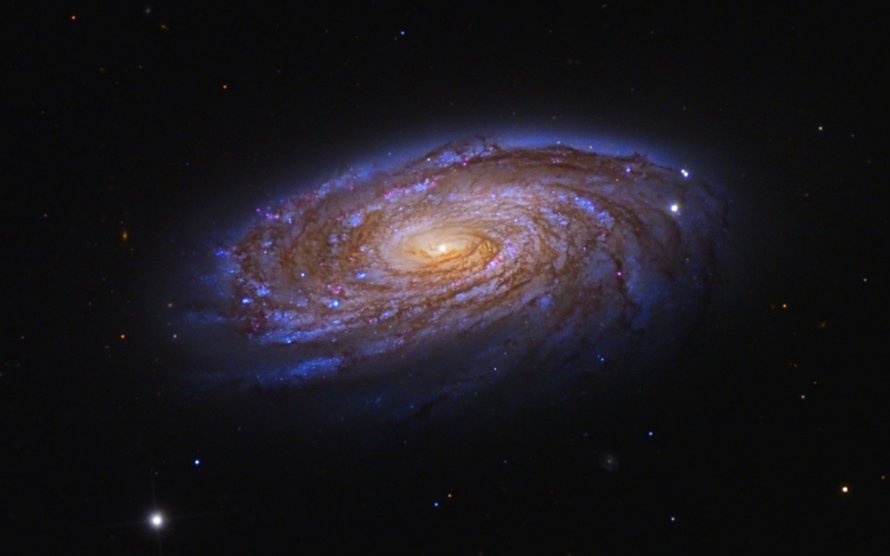M88 (NGC 4501)
Messier 88 (NGC 4501) is a spiral galaxy located in the constellation Coma Berenices in the Virgo Cluster of galaxies. M88 is 47000000 light years away from Earth.
M88 is best viewed during late spring, is magnitude 10.4, and can be viewed with small telescope. M88 is 7' x 3.7' in apparent size. For reference, the full moon is 30'.
Observing difficulty: Hard
- Name:
- Type:
- spiral galaxy
- Constellation:
- Coma Berenices
- NGC or IC:
- NGC 4501
- Magnitude:
- 10.4
- Viewing:
- small telescope
- Size:
- 7' x 3.7'
- Distance (light years):
- 47000000 LY
- RA:
- 12h 32.1m
- Dec:
- 14 26'
- Season:
- late spring
- Galaxy group:
- Virgo Cluster
- Messier Marathon #:
- 58
* The naked eye can see up to magnitude ~7-8 objects under ideal dark sky conditions.
Exploring A Spiral Galaxy in the Coma Berenices Constellation
Messier 88 (M88) is a spiral galaxy located within the Coma Berenices constellation, forming part of the Virgo Cluster. Charles Messier, a French astronomer, discovered it in 1781. This galaxy showcases a stunning structure with impressive spiral arms and is one of the brightest spiral galaxies in the Messier Catalogue, making it an interesting object for both professional and amateur astronomers.
Key Characteristics of Messier 88
M88 is a classic spiral galaxy, exhibiting well-defined, sprawling spiral arms rich in bright blue stars and dark dust lanes. It's classified as an "Sbc" galaxy, which is an intermediate type on the Hubble sequence between "Sa" and "Sc." This means it has moderately wound arms and a medium-sized nucleus. M88 is notably one of the few galaxies to have its arms wound so tightly, with a pitch angle of only about 30 degrees.
The galaxy is relatively large and massive, spanning about 100,000 light-years across, nearly the same size as our Milky Way. It's also known for its rapid inward gas motion towards the center, suggesting it has a highly active star formation process.
Magnitude and Size
M88 has an apparent magnitude of approximately 9.6, meaning it is not visible to the naked eye, but it can be spotted with a good pair of binoculars or a small telescope under dark skies. The galaxy extends around 6.9 by 3.7 arcminutes in the sky, roughly one-fifth the size of the full moon. Given its distance of about 47 million light-years from us, this translates to a physical diameter of roughly 100,000 light-years.
Finding and Observing Messier 88
To locate M88, you need to first find the Coma Berenices constellation. This constellation is best seen in the Northern Hemisphere during the spring. Within the constellation, M88 lies in the vicinity of several other Messier galaxies, including M85, M98, M99, and M100, which are all part of the Virgo Cluster.
Using a small telescope, M88 will appear as a faint, elongated patch of light with a brighter center. Larger telescopes, however, will start to reveal the galaxy's spiral structure, especially under dark, clear skies.
While it may not be the easiest object to locate and observe for amateur astronomers, the sight of M88, a galaxy actively creating stars in its heart while spinning in the vast expanse of space, is well worth the effort.



